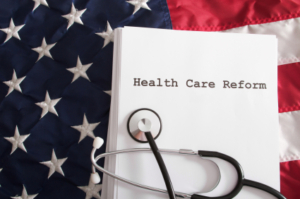CMS Adopts Methodology for Medicaid DSH Cuts
Medicaid DSH money will be allocated among states based on a new methodology under a regulation adopted this week by the Centers for Medicare & Medicaid Services.
But it is not clear when that new methodology may actually be used.
 Cuts in Medicaid disproportionate share hospital (Medicaid DSH) allotments to states were mandated by the Affordable Care Act based on the expectation that the law would greatly reduced the number of uninsured Americans. While this has been the case, the decline in the number of uninsured has not been as great as expected. For this reason, Congress has on several occasions delayed the required Medicaid DSH cut.
Cuts in Medicaid disproportionate share hospital (Medicaid DSH) allotments to states were mandated by the Affordable Care Act based on the expectation that the law would greatly reduced the number of uninsured Americans. While this has been the case, the decline in the number of uninsured has not been as great as expected. For this reason, Congress has on several occasions delayed the required Medicaid DSH cut.
That cut is now scheduled to take effect next week, on October 1, but a continuing resolution to fund the federal government, passed last week by the House and now under consideration by the Senate, would delay that cut again – at least until November 22.
Should the cut be implemented, Pennsylvania would lose 40 percent of its Medicaid DSH allotment from the federal government in FY alone and that cut would rise to 80 percent a year from FY 2021 through FY 2025. Pennsylvania safety-net hospitals view Medicaid DSH as an important part of their effort to care for the uninsured and underinsured residents of the low-income communities in which they are located.
Learn more about the new regulation governing the future allotments of Medicaid DSH money to the states and the prospects for Medicaid DSH allocation cuts being made anytime soon in the Healthcare Dive article “CMS finalizes Medicaid DSH cuts, but Congress could still delay” and see the regulation itself here.
 In addition, another two million people would be eligible for Medicaid if their states expanded their Medicaid program as authorized by the Affordable Care Act.
In addition, another two million people would be eligible for Medicaid if their states expanded their Medicaid program as authorized by the Affordable Care Act. According to a new Commonwealth Fund analysis,
According to a new Commonwealth Fund analysis, Or so reports a new study from the National Bureau of Economic Research.
Or so reports a new study from the National Bureau of Economic Research. House Bill 3, with more than 80 sponsors from both parties, would direct the state to establish its own health insurance exchange and establish a Pennsylvania Health Insurance Exchange Fund to pay for it.
House Bill 3, with more than 80 sponsors from both parties, would direct the state to establish its own health insurance exchange and establish a Pennsylvania Health Insurance Exchange Fund to pay for it. According to a new study from the Georgetown University Health Policy Institute’s Center for Children and Families,
According to a new study from the Georgetown University Health Policy Institute’s Center for Children and Families, SNAP was actively involved in
SNAP was actively involved in  The report, published on the JAMA Network Open, found that ER visits by uninsured patients fell from 16 percent to eight percent between 2006 and 2016, with most of this decline after 2014, while uninsured discharges fell from six percent to four percent.
The report, published on the JAMA Network Open, found that ER visits by uninsured patients fell from 16 percent to eight percent between 2006 and 2016, with most of this decline after 2014, while uninsured discharges fell from six percent to four percent. According to the Urban Institute report, repealing the entire Affordable Care Act would add almost 20 million Americans to the ranks of the uninsured. Medicaid and CHIP enrollment would fall by 15.4 million people and millions of others would lose the tax credits they used to purchase insurance. Some would purchase insurance with limited benefits and individual plan premiums would rise while others would go uninsured.
According to the Urban Institute report, repealing the entire Affordable Care Act would add almost 20 million Americans to the ranks of the uninsured. Medicaid and CHIP enrollment would fall by 15.4 million people and millions of others would lose the tax credits they used to purchase insurance. Some would purchase insurance with limited benefits and individual plan premiums would rise while others would go uninsured.